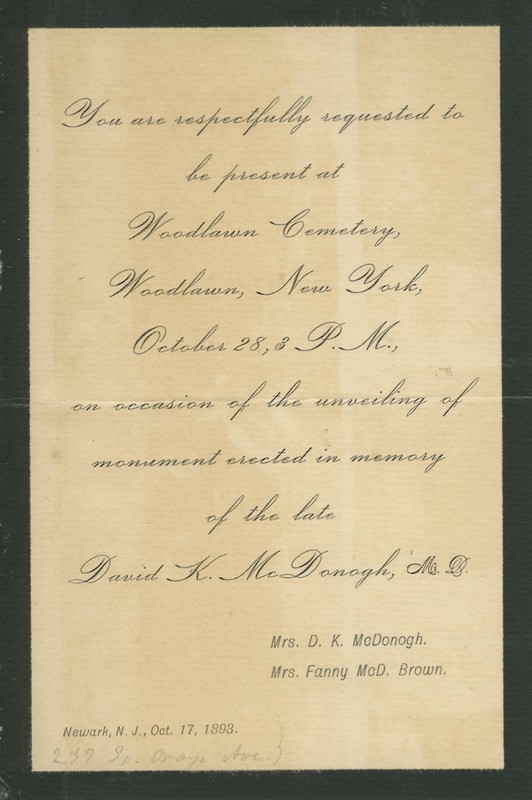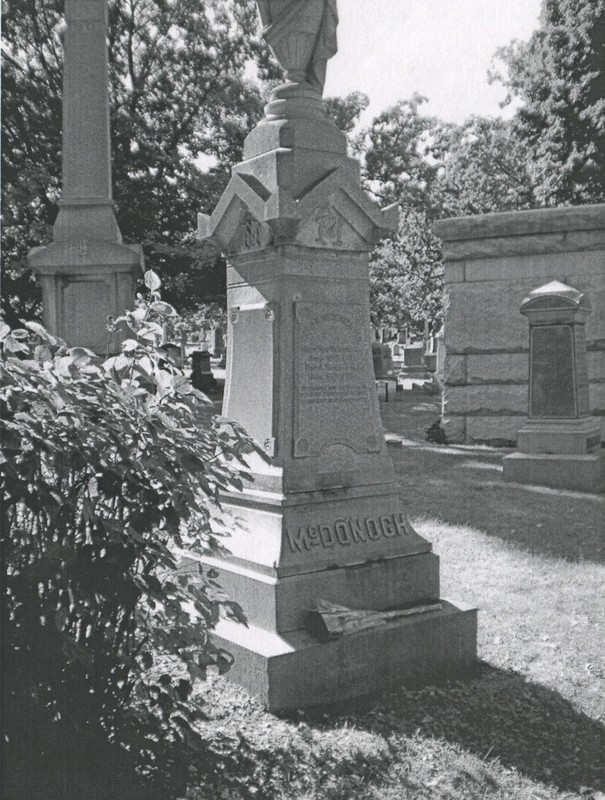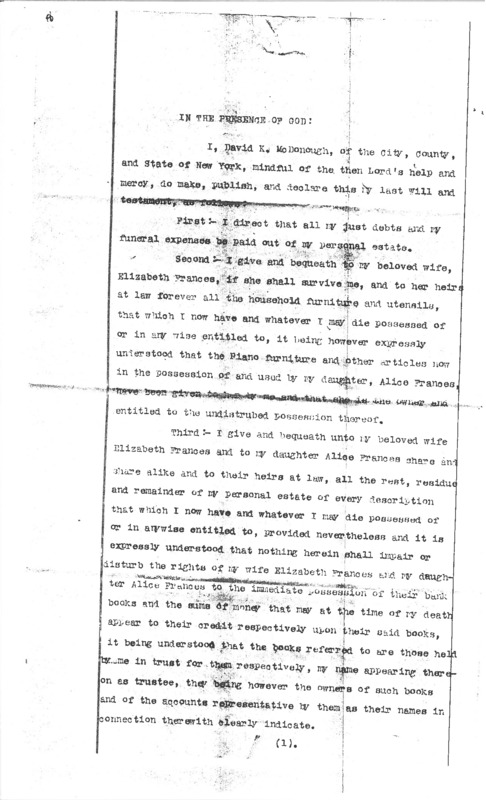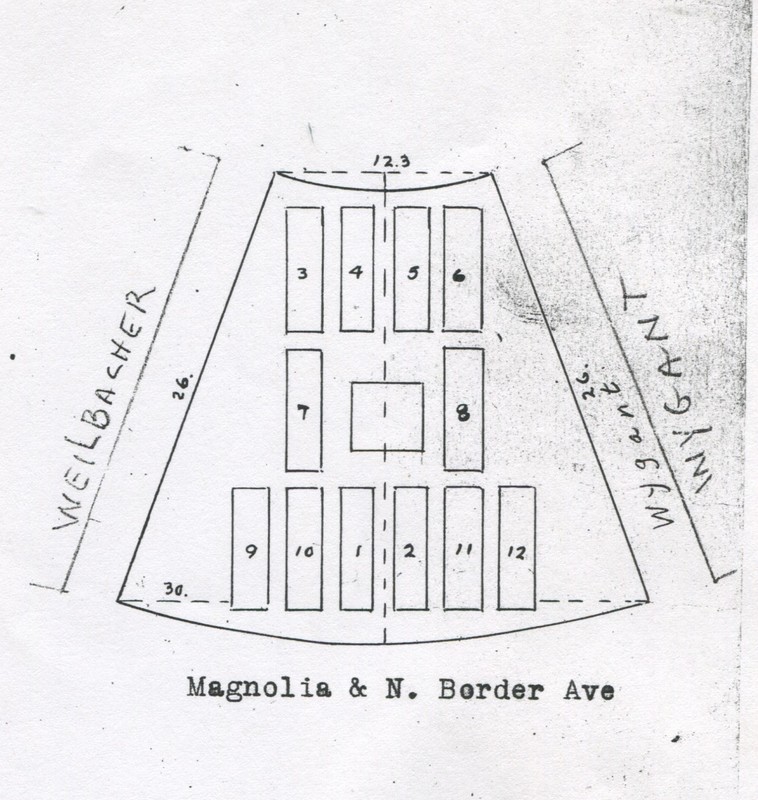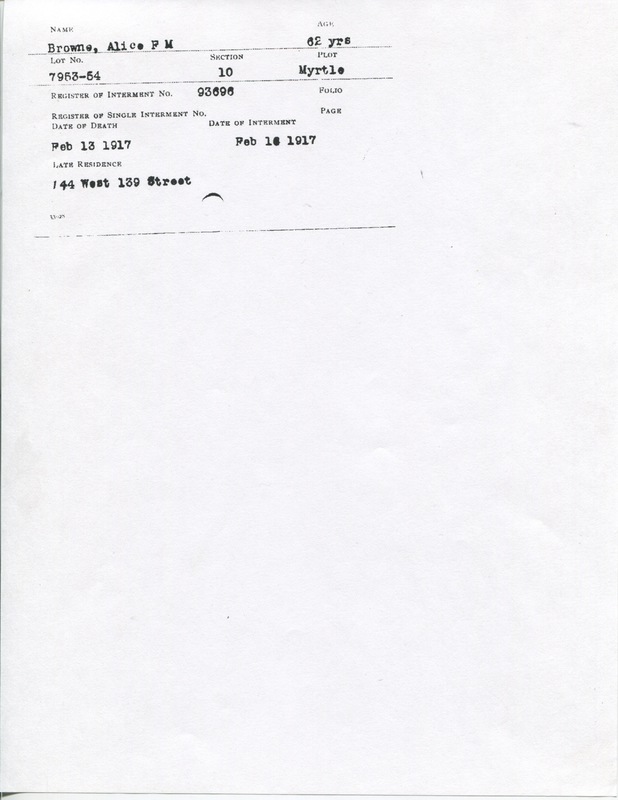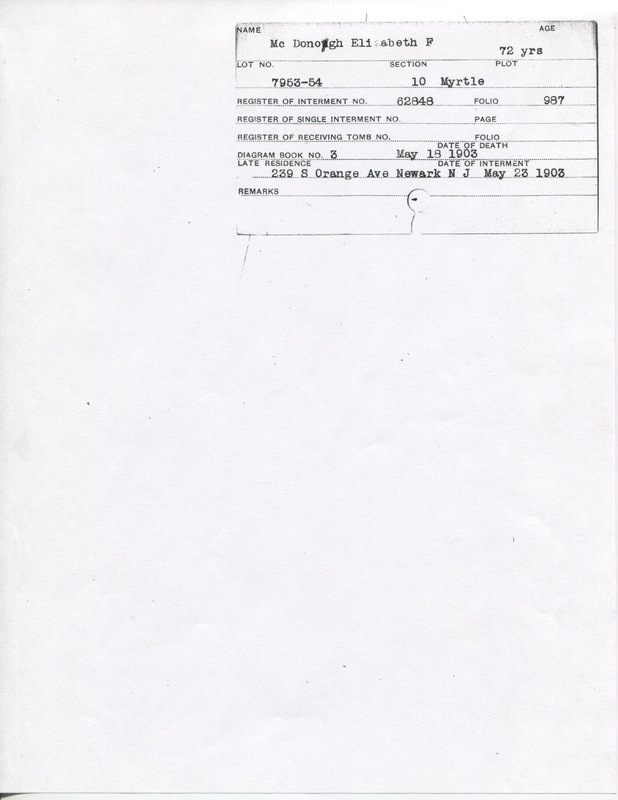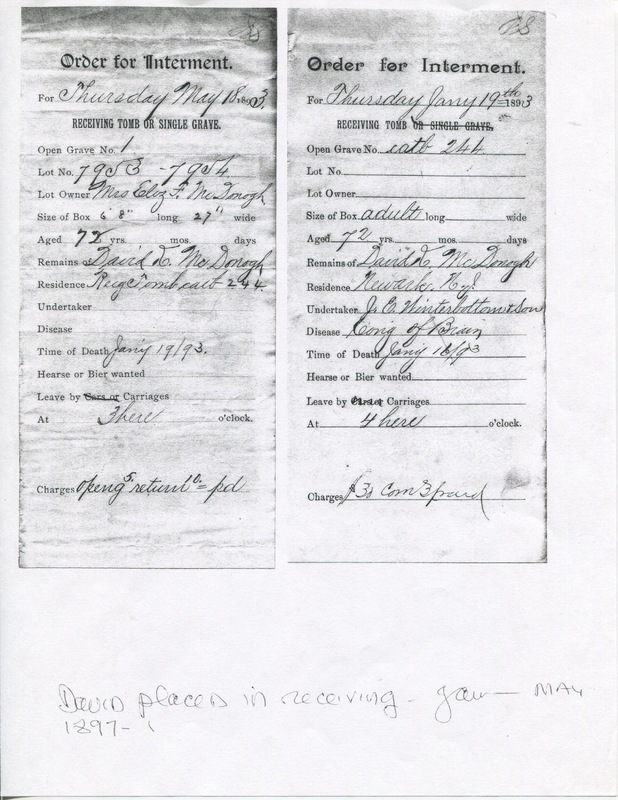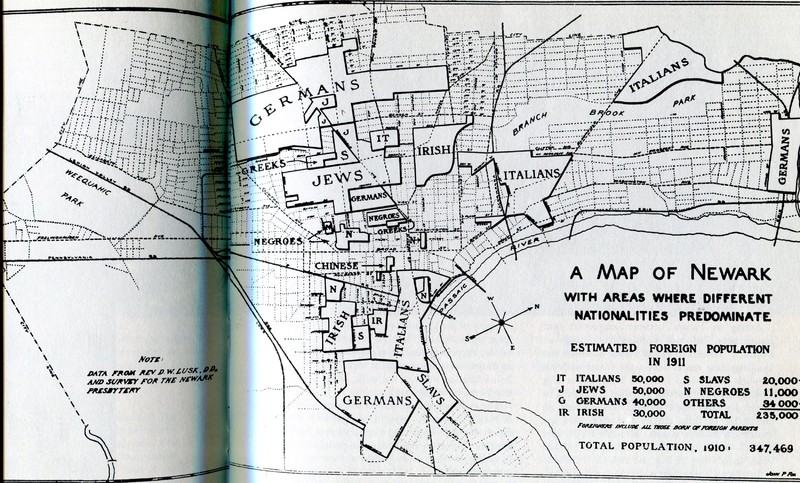David's Family, Last Will and Testament, & Burial Records
Introduction
Our understanding of David McDonogh's life is not limited to the years he was alive, or the scope of his actual lifetime. In many ways, the documents that say the most about David and his legacy come from after the doctor passed away in 1893. David's will alone provides us with a wealth of information about the kind of person he was, and the life he lived.
David McDonogh's Will
Through reading and interpreting David McDonogh’s last Will and testament we, as readers, were able to further construct an image of David. While looking at the immediate dissemination of David’s estate is interesting, further inspection reveals highly meaningful connections. The organizations David chose to benefit after his death are the same ones which he presumably chose to be involved with in his life.
After bequeathing most of his estate to his wife and only living child, David arranged to have his remaining estate divided amongst 5 churches, 3 colleges/college affiliates, 5 relatives/close friends, and 2 charitable institutions. The collegiate beneficiaries of the will were the medical school he attended, the Electric Medical College and the program that sent him through school, the American Missionary Association. Also notable in the will is David's donation to his alma mater, Lafayette College. He gifted the college two parts of his land holdings to be used at the college’s disposal.
* For further information on the churches look for the Abolition groups’ tags
The McDonogh Burial Plot
David was buried in Woodlawn Cemetary in the Bronx, New York. Over the years, his descendants came to rest alongside him. Pictured at right is a map of the McDonough plot. The following record of the people buried in the plot acts as a sort of geaneology, and as a list of David's relatives.
Also pictured are orders of Internment for David and his wife Elizabeth, as well as their daughter Alice.
Plot 1: David McDonogh
Birth: August 10,1821 Death: January 15, 1893Plot 2: Elizabeth Frances McDonogh (Wife of David McDonogh)
Birth: 1831 Death: May 18, 1903Plot 10: Christian F. McDonogh (Son of David McDonogh)
Death: May 16, 1866Plot 10: Gertrude M. McDonogh (Daughter of David McDonogh)
Plot 10: John Walter McDonogh (Son of David McDonogh)
Death: June 6, 1865Plot 11: Alice Frances Browne (Daughter of David McDonogh)
Born: May 1854 Death: Feburary 13, 1917Plot 12: George H. Browne (Husband of Alice Frances Browne)
Birth: 1844 Death: October 30, 1892Plot 9: Rosalind J.E. McDonogh Browne (Daughter of Alice Frances)
Birth: 1886 Death: May 26, 1923Plot 11: Grace Pearl Cromwell (Daughter of Alice Frances)
Born: 1893 Death: June 14, 1926Plot 3: Eric W Turner (Son of Grace Pearl Cromwell)
Birth:1957 Death: September 8, 1980Plot 6: William Ray Turner (Son of Grace Pearl Cromwell)
Birth: 1915 Death: September 19, 1988David McDonogh In Newark
Though David McDonogh practiced medicine in Manhattan, death records show that he lived with his family in Newark NJ. In addition to the plot of land at 239 S Orange Avenue, where the McDonogh residence was located, David owned the deed to an adjacent area which measured approximately 100 by 50 feet. In addition to his land holdings, David employed the services of Michael T. Barrett, whose offices were at 88 Broad Street. Of the many churches David named in his will, the only one located in Newark was the Plane Street Presbyterian Church, at 132 Plane Street. It isn’t hard to imagine that David and his family were part of this church community, given David’s religious character, the Plane Street Church’s proximity to his home, and the church’s prominence in David’s Will.
While he was practicing in New York, David was connected with the community of Newark, and so to understand this part of his life, it may be useful to understand Newark in the late 1800s. This map includes locations important in David’s life, as well as historical photographs of the surrounding neighborhood.























All the above photos are taken from John T. Cunningham's history Newark, which documents the rise of New Jersey's Largest city. During the late 1800s, Newark experienced unprecedented population growth. In 1850, the population was only 38,894. By 1900 it had grown to 246,070. This was due, in no small part, to the growth of manufacturing industries, as well as the establishment of large insurance companies. Streetcar networks popped up, and allowed workers to commute to the bustling downtown, yet live farther away, in a more pastoral setting.
The map below, also printed in Cunningham's epic history, was compiled in 1912 and gives insight into the diverse demographics of Newark at the turn of the century.
Source: Cunningham, John T. Newark. n.p.: Newark, N.J., New Jersey Historical Society [c1966], 1966. Lafayette Library Catalog. Web. 10 Dec. 2015. Pages 190-192, 205-207.

